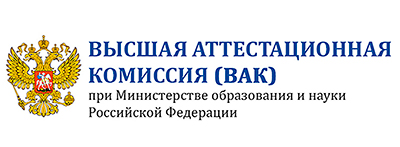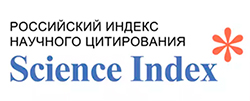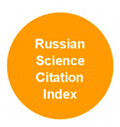The Zemsky Doctor program as a factor of the doctors’ migration to the peripheral territories of the central Russian regions
Abstract
The “Zemsky Doctor” program is celebrating the 10-year anniversary in 2022. Along with positive effects, researchers and experts have some concerns about its implementation and the controversial results achieved. Existing studies describe a socio-demographic profile of participating doctors without reference to the motivations and destination of relocation. This contradicts the integrated approach of migration process proven in the theory of push-pull factors of migration by E. Lee. This work presents a classification of relocation strategies under the Program, which include: the motivation for relocation (pull and push factors); circumstances that complicate the process of moving; socio-demographic characteristics of migrant doctors and their migration intentions. The research is based on biographical interviews with program participants and expert interviews with heads of medical institutions and its human resources departments from 9 regions of the Central Federal District in Russia. In five of the six outlined strategies, decision of migration is a combination of factors that goes beyond financial motivation. There are mostly two types of doctors who remain to work: those who are interested in moving to a larger or main city and those who have to move from the previous city (they use funds as start-up capital) including those who get paid upon their return home due to family matters or in order to take up employment according to their conditional scholarships and employee reimbursement obligation agreement. Those doctors who only participate in the Program in order to receive financial payments prefer the pendulum transfers or consider their relocation as temporary. The practical conclusion of the article is that compensation programs should be complemented with non-economic incentives to make it more efficient.
Downloads
References
Андреева Е.А., Карачурина Л.Б. (2021). Стратегии миграции врачей в периферийные муниципальные образования (на примере Тверской области). Мониторинг общественного мнения: экономические и социальные перемены, 3, 316-338. https://doi.org/10.14515/monitoring.2021.3.1725
Богатырева М.Д., Долгова И.В. (2016). Реализация программ «Земский доктор» и «Сельский фельдшер» в Алтайском крае как одно из ключевых направлений по повышению доступности первичной медико-санитарной помощи сельскому населению. Обязательное медицинское страхование в Российской Федерации, 2, 34-39.
Брынза Н.С., Горбунова О.П., Сунгатуллина, Л. А., Кинчагулова, М. В., Литвинов, И. С., Суханова, Т. В. (2017). Исследование факторов мотивации участников программы «Земский доктор» в Тюменском муниципальном районе. Медицинская наука и образование Урала, 18(1), 88-91.
Галкин К.А. (2018). Карьерные стратегии молодых сельских врачей ленинградской области: нарративный анализ. Вестник Пермского университета. Философия. Психология. Социология, 1 (33), 158-167. https://doi.org/10.17072/2078-7898/2018-1-158-167
Галкин К.А. (2020). Все прелести сельской жизни? Типы профессиональной идентичности молодых врачей, работающих в сельской местности. Журнал исследований социальной политики, 18(2), 175-190.
Гридасов Г.Н., Бутолин Д.С., Богатырева Г.П. (2014). Об эффективности реализации программы «Земский доктор» на территории Самарской губернии. Управление качеством медицинской помощи, 2, 6-15.
Данилов А.В., Литвинова Т.Д., Загитова В.А. (2018). Итоги реализации программы «Земский доктор» на территории Воронежской области за 2012-2017 годы. Прикладные информационные аспекты медицины, 21(1), 24-32.
Карачурина Л.Б. (2022). Урбанизация или субурбанизация определяет миграцию населения в Московской области? Вестник Санкт-Петербургского университета. Науки о Земле, 67(2), 360-381. https://doi.org/10.21638/spbu07.2022.208
Кинчагулова М.В., Брынза Н.С., Горбунова О.П., Решетникова Ю.С. (2018). Результаты реализации программы «Земский доктор» в Тюменской области. Здравоохранение Российской Федерации, 62(6), 289-294. http://dx.doi.org/10.18821/0044-197X-2018-62-6-289-294_289
Кинчагулова М.В., Брынза Н.С., Горбунова О.П., Сунгатуллина Л.А. (2019). Мотивация участников программы «Земский доктор» в Тюменской области и оценка их удовлетворенности условиями труда и жизни в сельской местности. Проблемы социальной гигиены, здравоохранения и истории медицины, 27(2), 158-162. http://dx.doi.org/10.32687/0869-866X-2019-27-2-158-162
Кобзева Т. А. (2011). Землеустроительные мероприятия земских учреждений в контексте столыпинской аграрной реформы в начале XX в. (на материалах Симбирской губернии). Исторические, философские, политические и юридические науки, культурология и искусствоведение. Вопросы теории и практики, (2-2), 90-92.
Ковалев С.А. (2003). Избранные труды. Смоленск: Ойкумена.
Мкртчян Н.В., Флоринская Ю.Ф. (2020). Почему люди уезжают из одних регионов и приезжают в другие: мотивы межрегиональной миграции в России. Мониторинг общественного мнения: экономические и социальные перемены, 5(159), 130-153. http://dx.doi.org/10.14515/monitoring.2020.5.1619
Нефедова Т.Г. (2010). Костромская периферия в фокусе проблем периферийных районов России. Регион: экономика и социология, 8, 32.
Райкова С.В., Максинев Д.В., Завьялов А.И. (2012). К истории становления и развития земской медицины и санитарного дела в Тамбовской губернии в конце ХIX начале XX столетий. Вестник российских университетов. Математика, 17(2), 662-665.
Сиротко М.Л., Богатырева Г.П., Корендясов П.П. (2015). Влияние миграции выпускников медицинского вуза на обеспеченность врачебными кадрами в Самарской области. Бюллетень Национального научно-исследовательского института общественного здоровья имени Н.А. Семашко, 7, 82-93.
Сорокина Т.С. (2010). Земская медицина приоритет России. Земский врач, 1, 7-10.
Тарасенко Е.А., Хорева О.Б. (2016). Экономическое стимулирование для устранения дефицита медицинских кадров в сельских территориях. Вопросы государственного и муниципального управления, 4, 117-142.
Чвикалов А.И. (2011). Земские врачи центрально-чернозёмных губерний во второй половине XIX-начале XX в.: служба и служение. Исторические, философские, политические и юридические науки, культурология и искусствоведение. Вопросы теории и практики, (7-1), 207-212.
Шепелева В.М., Корнеева В.А., Ямщикова Т.В. (2019). Оценка отношения студентов-медиков к Федеральной программе «Земский доктор». Modern Science, (12-2), 227-230.
Штейнберг И.Е. (Ред.) (2009). Качественные методы. Полевые социологические исследования. СПб.: Алетейя
Щербакова Е.М. (2020). Предварительные демографические итоги 2019 года в России (часть I). Демоскоп Weekly, 847-848. http://www.demoscope.ru/weekly/2019/0799/barom01.php
Astor A., Akhtar T., Matallana M.A., Muthuswamy V., Olowu F.A., Tallo V., Lie R.K. (2005). Physician migration: views from professionals in Colombia, Nigeria, India, Pakistan and the Philippines. Social science & medicine, 61(12), 2492-2500. https://doi.org/10.1016/j.socscimed.2005.05.003
Baer L.D., Ricketts T.C., Konrad T.R., Mick S.S. (1998). Do international medical graduates reduce rural physician shortages? Medical Care, 1534-1544.
De Haas H. (2010). Migration and development: A theoretical perspective. International migration review, 44(1), 227-264.
Dubois C.A., Nolte E., McKee M. (2005). Human resources for health in Europe. McGraw-Hill Education (UK).
Dussault G., Franceschini M.C. (2006). Not enough there, too many here: understanding geographical imbalances in the distribution of the health workforce. Human resources for health, 4(1), 1-16. https://doi.org/10.1186/1478-4491-4-12
Flores E.L.L., Manahan E.M.R., Lacanilao M.P.B., Ladaw I.M.B.T., Mallillin M.M.B., Mappatao N.T.Q., Pepito V.C.F. (2021). Factors affecting retention in the Doctors to the Barrios Program (Philippines) from 2012 to 2019: A Mixed Methods Study. BMC Health Services Research, 21, 1-11. https://doi.org/10.1186/s12913-021-07219-0
George A., Blaauw D., Thompson J., Green-Thompson L. (2019). Doctor retention and distribution in post-apartheid South Africa: tracking medical graduates (2007–2011) from one university. Human Resources for Health, 17, 1-9.
George G., Atujuna M., Gow J. (2013). Migration of South African health workers: the extent to which financial considerations influence internal flows and external movements. BMC Health Services Research, 13(1), 1-8. https://doi.org/10.1186/1472-6963-13-297
Han G.S., Humphreys J.S. (2006). Integration and retention of international medical graduates in rural communities: A typological analysis. Journal of Sociology, 42(2), 189-207.
Hancock C., Steinbach A., Nesbitt T.S., Adler S.R., Auerswald C.L. (2009). Why doctors choose small towns: a developmental model of rural physician recruitment and retention. Social science & medicine, 69(9), 1368-1376.
Harris J.R., Todaro M.P (1970). Migration, unemployment and development: a two-sector analysis. Theories of migration. The American economic review, 60(2), 126-142.
Harrison M.E. (1998). Female physicians in Mexico: Migration and mobility in the lifecourse. Social science & medicine, 47(4), 455-468. https://doi.org/10.1016/S0277-9536(98)00112-9
Hay M., Mercer A.M., Lichtwark I., Tran S., Hodgson W.C., Aretz H.T., Armstrong E.G., Gorman D. (2017). Selecting for a sustainable workforce to meet the future healthcare needs of rural communities in Australia. Advances in Health Sciences Education, 22, 533-551.
Humphreys J.S., McGrail M.R., Joyce C.M., Scott A., Kalb G. (2012). Who should receive recruitment and retention incentives? Improved targeting of rural doctors using medical workforce data. Australian Journal of Rural Health, 20(1), 3-10.
Iosifides T., Sporton D. (2009). Biographical methods in migration research. Migration Letters, 6(2), 101-108. https://doi.org/10.33182/ml.v6i2.69
Lee E.S. (1966). A theory of migration. Demography, 3(1), 47-57.
Massey D.S., Arango J., Hugo G., Kouaouci A., Pellegrino A., Taylor J.E. (1993). Theories of international migration: A review and appraisal. Population and development review, 431-466.
Mbemba G.I.C., Gagnon M.P., Hamelin-Brabant L. (2016). Factors influencing recruitment and retention of healthcare workers in rural and remote areas in developed and developing countries: an overview. Journal of public health in Africa, 7(2).
Mburu G., George G. (2017). Determining the efficacy of national strategies aimed at addressing the challenges facing health personnel working in rural areas in KwaZulu-Natal, South Africa. African Journal of Primary Health Care and Family Medicine, 9(1), 1-8. https://doi.org/10.4102/phcfm.v9i1.1355
Okeke E.N. (2014). Do higher salaries lower physician migration? Health policy and planning, 29(5), 603-614.
Paulhus D.L. (2017). Socially desirable responding on self-reports. Encyclopedia of personality and individual differences, 1-5.
Stewart G.D., Khadra M.H. (2009). The continuing medical education activities and attitudes of Australian doctors working in different clinical specialties and practice locations. Australian Health Review, 33(1), 47-56.
Wilson N.W., Couper I.D., De Vries E., Reid S., Fish T., Marais B.J. (2009). A critical review of interventions to redress the inequitable distribution of healthcare professionals to rural and remote areas. Rural and remote health, 9(2), 1-21.
Yow A., Garces-Ozanne A., Audas R. (2015). Carousel and conveyor belt: the migration of doctors in New Zealand. Labour & Industry: a journal of the social and economic relations of work, 25(3), 219-234.




















